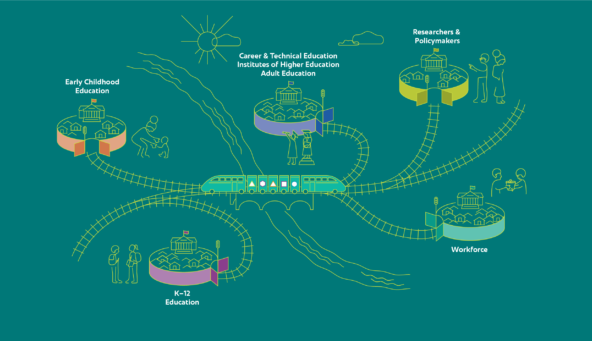Illuminations and Insights
We shine a light on our partners, the work we've done across the country, and insights from our team members.
Interoperability
- See All
- About EA
- Analyst
- Artificial Intelligence (AI)
- Attendance
- Conferences
- COVID-19
- Data Engineering
- Data Privacy & Security
- Data Systems
- Data Visualization & Dashboards
- DEI
- Ed-Fi
- Educator Effectiveness
- ESSA
- Future Forward
- Interoperability
- Research
- Social Emotional Learning
- Student Growth Measures
- User-Centered Design
- Product Development

Data neighborhoods: Preserving context around educational data
In this blog, we establish core principles for conceptualizing data interoperability as transport, including how decentralized governance models enable local control over data in ways that maximize privacy and security. We introduce the concept of "data neighborhoods" as a metaphor for this interoperability model, and we connect different kinds of context around educational data to the core principles.